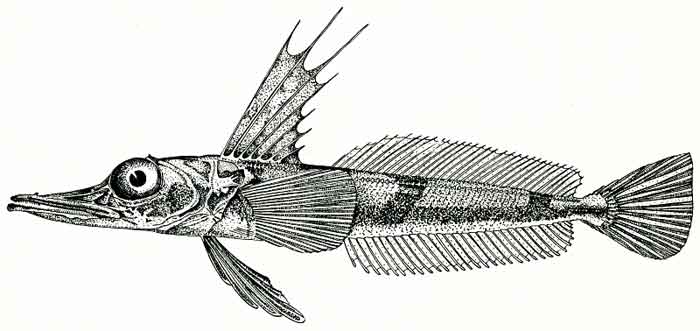Superregnum: Eukaryota
Cladus: Unikonta
Cladus: Opisthokonta
Cladus: Holozoa
Regnum: Animalia
Subregnum: Eumetazoa
Cladus: Bilateria
Cladus: Nephrozoa
Superphylum: Deuterostomia
Phylum: Chordata
Subphylum: Vertebrata
Infraphylum: Gnathostomata
Megaclassis: Osteichthyes
Superclassis/Classis: Actinopterygii
Classis/Subclassis: Actinopteri
Subclassis/Infraclassis: Neopterygii
Infraclassis: Teleostei
Megacohors: Osteoglossocephalai
Supercohors: Clupeocephala
Cohors: Euteleosteomorpha
Subcohors: Neoteleostei
Infracohors: Eurypterygia
Sectio: Ctenosquamata
Subsectio: Acanthomorphata
Divisio/Superordo: Acanthopterygii
Subdivisio: Percomorphaceae
Series: Eupercaria
Ordo: Perciformes
Subordo: Notothenioidei
Familia: Channichthyidae
Genus: Channichthys
Species (9): C. aelitae – C. bospori – C. irinae – C. mithridatis – C. panticapaei – C. rhinoceratus – C. richardsoni – C. rugosus – C. velifer
Name
Channichthys Richardson, 1844
Type species: Channichthys rhinoceratus Richardson, 1844
References
Richardson, J.; 1844: Description of a new genus of gobioid fish. Annals and Magazine of Natural History (New Series), 13 (86): 461–462.
Channichthys and its species (including synonyms) in Catalog of Fishes, Eschmeyer, W.N., Fricke, R. & van der Laan, R. (eds.) 2024. Catalog of Fishes electronic version.

Channichthys irinae
Channichthys is a genus of marine ray-finned fish belonging to the family Channichthyidae, the crocodile icefishes. They are native to the Southern Ocean.
Taxonomy
Channichthys was first formally described as a genus in 1844 by the Scottish naval surgeon, naturalist and Arctic explorer John Richardson when he described the unicorn icefish (Channichthys rhinoceratus) which he placed in a new monotypic genus.[1] Subsequently up to nine species have been classified within Channichthys which is what FishBase does[2] while Catalog of Fishes recognises 5 species[3] while other authorities are of the view that the genus is monotypic and that C. rhinoceratus is the only species.[4][5] The genus name is a compound of channos meaning "gape" and ichthys which means "fish", alluding to the wide gape of these fishes.[6]
Species
Dorsal fins
The species of this genus are quite similar to each other, and reliable ways of distinguishing them include the shape of their dorsal fins, gill raker count and relative eye diameter to snout length.
Channichthys aelitae Shandikov, 1995 – Aelita icefish
Channichthys bospori Shandikov, 1995 – big-eyed icefish
Channichthys irinae Shandikov, 1995 – pygmy icefish
Channichthys mithridatis Shandikov, 2008 – green icefish
Channichthys panticapaei Shandikov, 1995 – charcoal icefish
Channichthys rhinoceratus Richardson, 1844 – unicorn icefish
Channichthys richardsoni Shandikov, 2011 – robust icefish
Channichthys rugosus Regan, 1913 – red icefish
Channichthys velifer E. E. Meisner, 1974 – sail icefish
Characteristics
Channichthys icefishes may have a backwards pointing spine on the snout and small tubercles on the upper surface of the head. The operculum has 5-7 robust spines with blunt spines on the other opercular bones. They have 2 lateral lines which have bony plates, although they may have other plates on their flanks. In the pelvic fin the third ray is longer than the others, The first dorsal fin is tall and in large specimens the fin rays have small tubercles on them. The first and second dorsal fins are clearly separated. They have a rounded caudal fin.[7] They have a maximum standard length which varies from 3 cm (1.2 in) in C. rugosus to 43.7 cm (17.2 in) in C. mithridatis.[2]
Distribution, habitat and biology
Channichthys icefishes are restricted to the Kerguelen-Heard region of the Indian sector of the Southern Ocean.[3] They are demersal fishes.[2] They are mainly piscivorous but will also eat algae. They spawn in the summer and migrate into shallow water to do so.[7]
Fisheries
Channichthys icefishes, particularly C. rhinoceratus, are caught as bycatch in botton trawls for the mackerel icefish (Champsocephalus gunnari).[7]
References
Eschmeyer, William N.; Fricke, Ron & van der Laan, Richard (eds.). "Genera in the family Channichthyidae". Catalog of Fishes. California Academy of Sciences. Retrieved 17 October 2021.
Froese, Rainer and Pauly, Daniel, eds. (2021). Species of Channichthys in FishBase. June 2021 version.
Eschmeyer, William N.; Fricke, Ron & van der Laan, Richard (eds.). "Species in the genus Channichthys". Catalog of Fishes. California Academy of Sciences. Retrieved 17 October 2021.
Voskoboinikova, Olga (2002). "Early life history of two Channichthys species from the Kerguelen Islands, Antarctica (Pisces: Notothenioidei: Channichthyidae)". Zoosystematica Rossica. 10: 407–412.
Eastman, Joseph & Eakin, Richard (2000). "An updated species list for notothenioid fish (Perciformes; Notothenioidei), with comments on Antarctic species". Archive of Fishery and Marine Research. 48: 11–20. CiteSeerX 10.1.1.456.9054.
Christopher Scharpf & Kenneth J. Lazara, eds. (12 April 2021). "Order Perciformes: Suborder Notothenoididei: Families Bovichtidae, Pseaudaphritidae, Elegopinidae, Nototheniidae, Harpagiferidae, Artedidraconidae, Bathydraconidae, Channichthyidae and Percophidae". The ETYFish Project Fish Name Etymology Database. Christopher Scharpf and Kenneth J. Lazara. Retrieved 17 October 2021.
T. Iwami and K-H Koch (1990). "Channicthyidae Icefishes". In O. Gon and P.C. Heemstra (eds.). Fishes of the Southern Ocean. South African Institute for Aquatic Biodiversity. ISBN 9780868102115.
Retrieved from "http://en.wikipedia.org/"
All text is available under the terms of the GNU Free Documentation License

